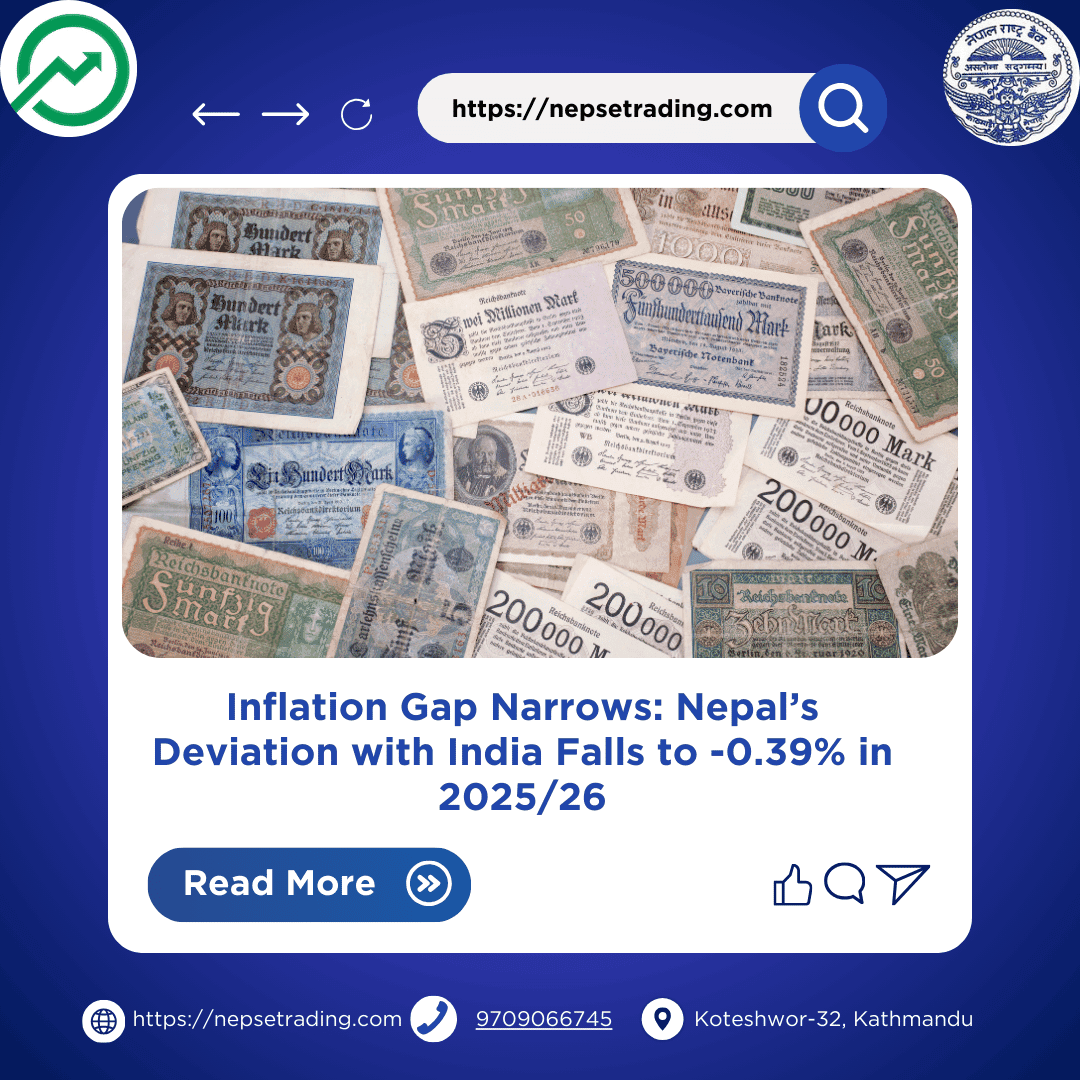By Sandeep Chaudhary
Inflation Gap Narrows: Nepal’s Deviation with India Falls to -0.39% in 2025/26

The August 2025/26 CPI data shows that the long-standing inflation gap between Nepal and India has not only narrowed but reversed, with Nepal’s inflation falling below India’s for the first time in four years. Nepal recorded a 1.68% year-on-year inflation rate, while India stood at 2.07%, leaving a -0.39% deviation.
Historically, Nepal consistently ran higher inflation than India. In 2022/23, Nepal’s inflation averaged 7.74%, compared to India’s 6.06%, a gap of +1.68 percentage points. In 2023/24, the deviation narrowed to +0.34 points, with Nepal at 5.44% and India at 5.11%. By 2024/25, the two nearly converged, with Nepal at 4.06% and India at 3.91%, just a +0.16-point difference. Now, in 2025/26, the balance has shifted, with Nepal dipping below India.
The main factor behind Nepal’s lower inflation is the decline in food prices, particularly cereals and vegetables, supported by good harvests and stable imports. This has helped reduce household food expenditure significantly. However, non-food and service costs (housing, utilities, education, and health) are still rising, meaning that underlying structural inflation remains in the economy. In contrast, India’s inflation held higher due to agricultural pressures from uneven monsoons and service-sector demand, which kept prices elevated.
This narrowing and reversal of the inflation gap has key implications. For Nepalese households, it means temporary relief in daily expenses, while for policymakers, it signals success in stabilizing food inflation but also warns of ongoing service-cost risks. For regional trade, it highlights how closely Nepal and India’s economies are linked, yet how domestic supply and weather conditions can shift inflation dynamics independently.









